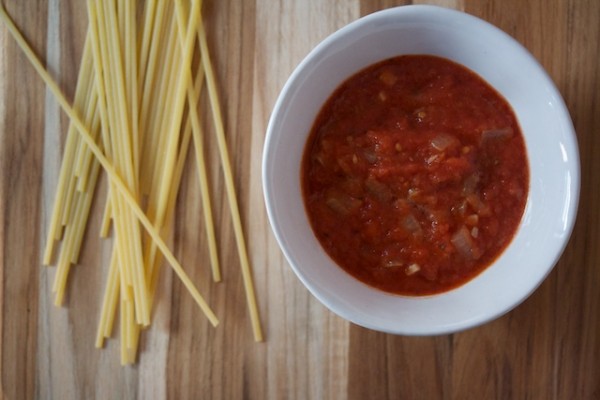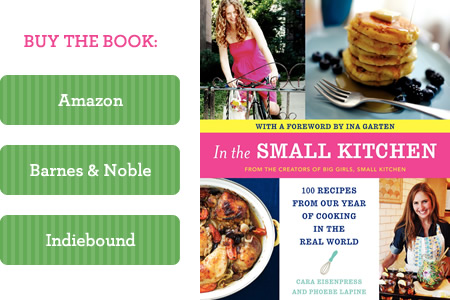In a world where we’re always seeking out the new, making and remaking an old favorite has the advantage of propelling us towards perfection.
That’s what happened when Alex and I made pasta with tomato sauce a weekly dinner staple, its assembly a cherished routine. He makes the sauce, and I assemble the dish. As he’s grown to know exactly how the garlic should look and smell when you’re ready to add the tomatoes, I’ve determined the right scale of acidity to richness (olive oil, parmesan), and how to melt mozzarella in the bottom of the bowl so each forkful of pasta includes a cheese pull. These days, our pasta with tomato sauce has gotten really good, because of a few particular ingredients and techniques.
I know this might sound simple, even trivial, the idea of going through a dish that a lot of you could make in your sleep in such detail. But with a couple extra flourishes and some mastery of timing, I think you can transform a ho hum dinner into the kind of food that reminds you why you cook, why you eat, and why you rarely need to order take-out.
For a two-person dinner and leftovers, you’ll need 3/4 pound of pasta (any shape), one 28-ounce can of whole plum tomatoes, an onion, as much garlic as you can stand peeling, a hunk of parm to grate, and some good olive oil (if you care). I sometimes put mozzarella into my pasta, but the dish is also good without.
Here’s the step by step.
Salt a big pot of water really well and bring it to boil. I’ve heard it said that the water should taste like the sea, or that you should taste the salt. I never actually sip my water and go by visual amounts instead. You want a lot of salt.
Make whatever sauce you love (here’s ours: sauté onion in olive oil; add garlic; add oregano and salt; add the whole tomatoes blended or chopped with their juices and simmer until reduced and saucy). Start the water boiling at the same time, and then keep the sauce simmering in a huge skillet right next to the pasta. Put in the spaghetti when the sauce is almost done, but if you finish the sauce early, just turn off the heat on the sauce until right before the pasta is done.
The reason for the whole tomatoes is that they preserve the most flavor; blend or chop them before adding to the sauce. The reason for the pan’s big surface is that your garlic and onion cook will best, and, more importantly, that all the pasta with fit into the pan too.
As soon as the pasta is al dente, scoop it right from the pot of boiling water into the pan of simmering sauce. Don’t worry about carrying over some of the cooking water. In fact, you want plenty to cling to the strands. That water will add flavor (from the salt) and body (from the starch) to your sauce.
Now, stir together until the sauce really coats the pasta. Ladle in some more cooking water if the sauce seems too thick to attach itself to the spaghetti.
When sauce and pasta are intertwined, throw grated parm right into the pan. I’ll use close to a cup-loosely packed, of course. This is when I usually turn off the heat and toss everything together. The parm makes the sauced pasta almost creamy.
The finishing touch? A pour of good olive oil. The fat emulsifies the sauce a little, rounding out the flavors, adding an appealing shine. Here’s where you wrap pasta around a clean fork and taste your creation, if you haven’t yet. Balance the flavors, if they need balance. More salty water, more parm, more olive oil are all potential next moves.
If I’m using mozzarella, I tear it up into small-ish bite-sized pieces and place them into the bottom of my bowl. Smartest of all is when I remember to take the mozz out of the fridge at the start of cooking. Bringing the piece to room temperature helps ensure that they’ll melt when I do the next thing: scoop a portion of hot pasta right on top of the mozzarella. And then, here’s the hardest part, timing-wise, of the whole enterprise. I wait for about two minutes, as the pasta’s heat melts the mozzarella into creamy, gooey jackpots.
At the same time, the sauce is sinking further into the pasta strands, deepening the flavors.
I sprinkle a little more parm.
Then I dig in, I’m in search of a bite of gooey mozzarella to go along with my well-seasoned, slightly oily, and delicious bite of pasta. When fork reaches mouth, I think, always: “this is what pasta should be.”







